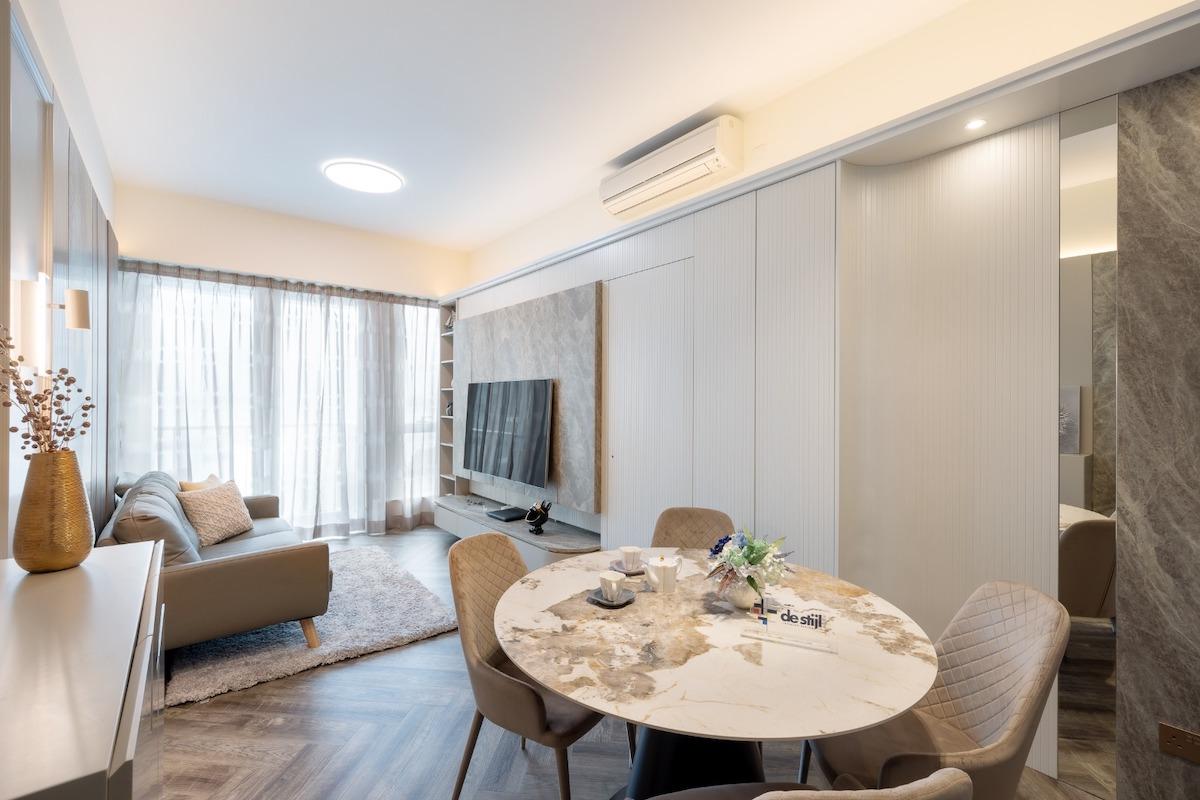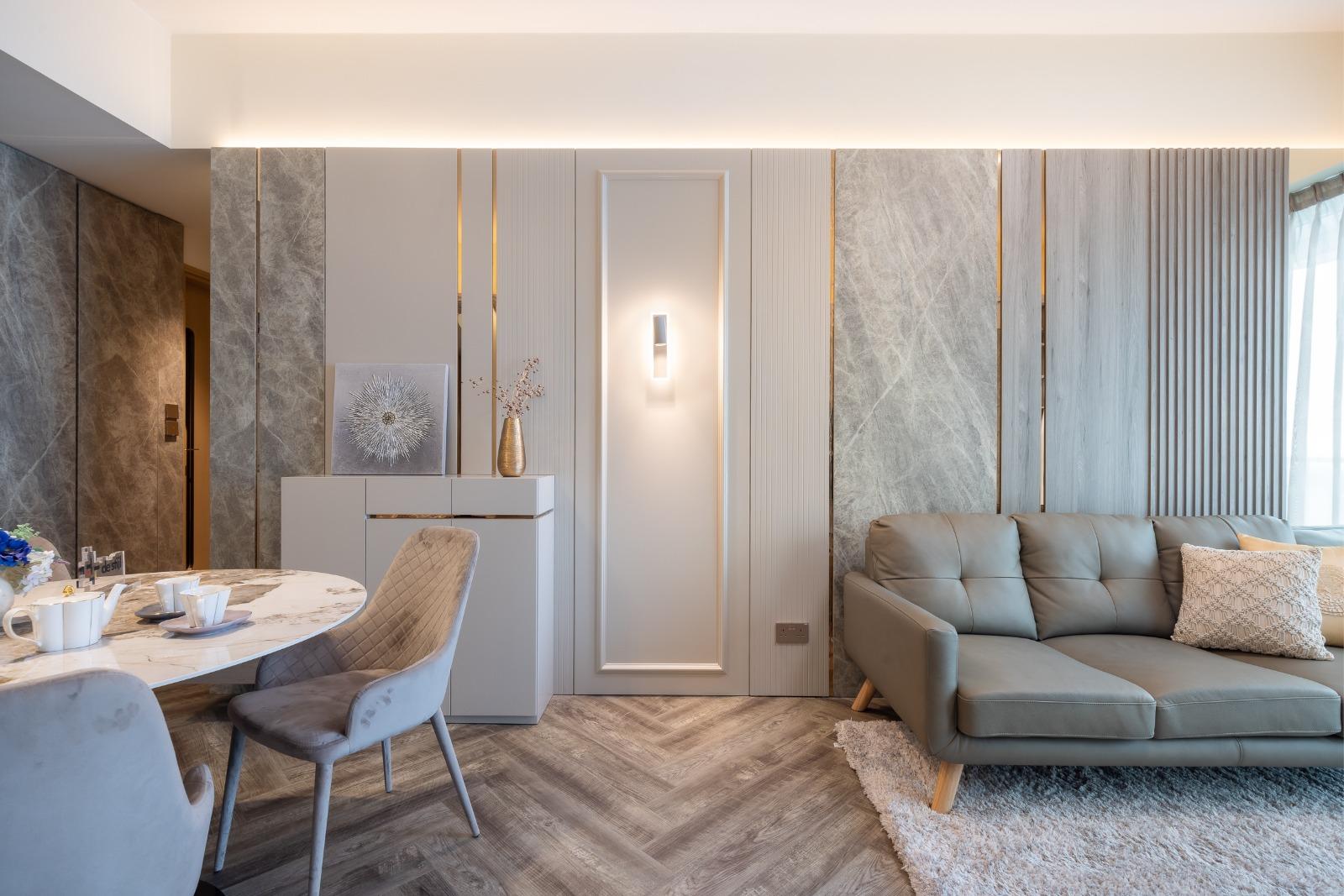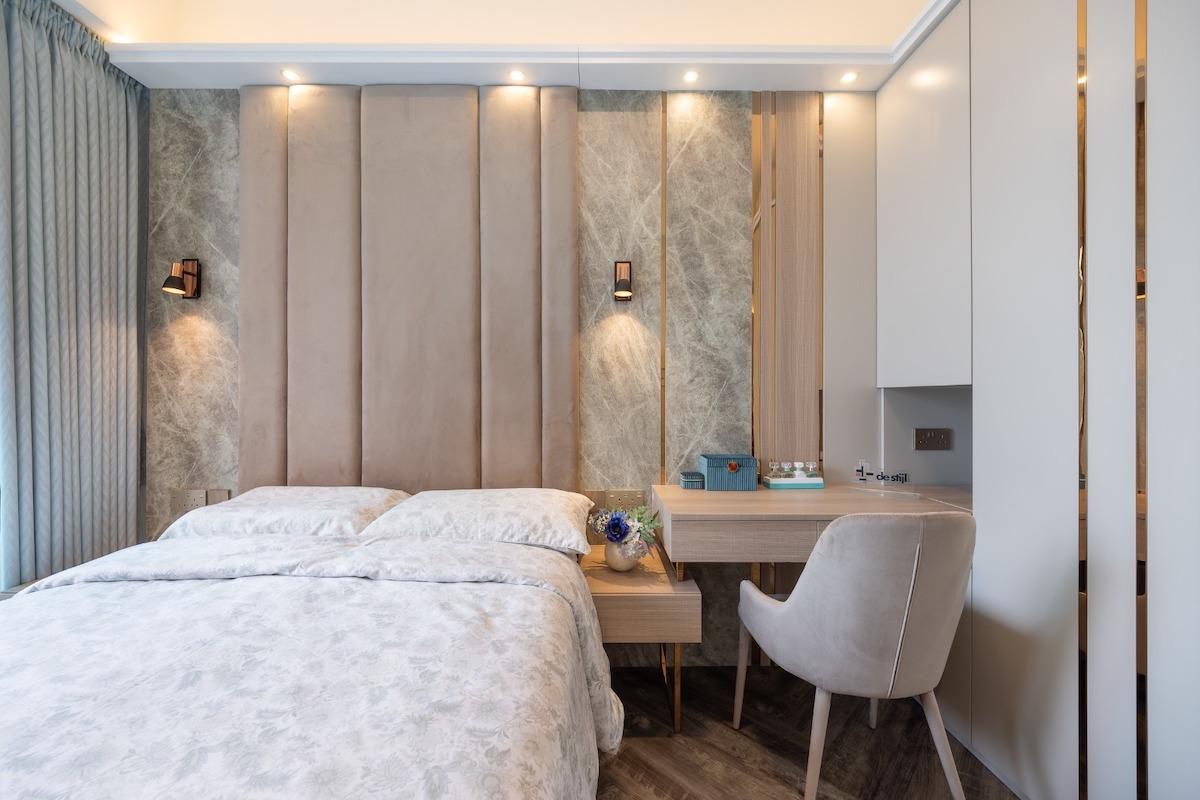Sam Ho, the son of a third-generation descendant Lingnan School artist, talks to us about the influence of his father and the Dutch art movement on his designs.
Even among those who have not studied art, the Dutch art movement known as De Stijl is surely a familiar name. Originating in 1917, the De Stijl movement advocated for a return to simplicity, eliminating unnecessary forms and focusing on the essence of art through the use of minimal straight lines, rectangles, and three primary colours. This concept not only influenced later architectural styles such as Bauhaus, but also inspired the birth of the Hong Kong interior design company De Stijl Interior Design.
Founded in 2018, the company’s design philosophy is about the pursuit of simplicity from the De Stijl style while embracing the “form follows function” philosophy of Bauhaus. It emphasises practicality as well as art aesthetics.
De Stijl Interior Design was established by four people, with each founding partner having over 20 years of experience in the interior design industry. They have clear divisions of labour. Design director Sam Ho is responsible for designing, while the other partners handle engineering construction, client service, and project management.

“Unlike Hong Kong’s common practice of continuously adding more small elements to increase the price, our home design philosophy follows the concept of ‘subtraction’. We remove unnecessary furniture, meaningless functions, and expensive building materials to meet the homeowner’s lifestyle needs. Although I personally prefer the Bauhaus style, I’m not confined to any specific style when designing for clients,” he said.
His keen sensitivity to art likely stems from growing up in an artistically rich environment. His father, Ho Wing-Cheong, is a third-generation Lingnan School painter and was mentored by the Lingnan School painting style master, Zhao Shao’ang. Despite pursuing careers in different fields, both father and son have embraced a blend of Eastern and Western influences, incorporating elements from both classical and contemporary art.

“My dad is very dedicated and stubborn when it comes to art. Sometimes he’s so focused on painting that he forgets all about food and sleep,” Ho reminisced.
“When painting something like a peacock or a tiger, he would spend so much time meticulously tracing each strand of fur, stroke by stroke. I was rebellious and lacked understanding when I was younger, so I always wondered why didn’t he just use a pen to finish it quickly.
“It wasn’t until later, as I matured, that I understood his commitment to the Gongbi Chinese painting technique. He was a man of integrity and placed great importance on authenticity.
“He taught me to respect others and to be meticulous in all my endeavours, that haste and mere completion should not overshadow the pursuit of excellence. His outlook on life and work left a deep and lasting impression on me.”
He inherited his father’s artistic talent and consistently excelled in art subjects from childhood to adulthood, often achieving “A++” grades and even ranking first in the class. However, he never considered inheriting his father’s profession and becoming the fourth-generation successor of the Lingnan School of Painting. Instead, he pursued a career in interior design.
“Before interior design, I worked as a real estate agent for over ten years. It was through a chance opportunity that I ended up working in an interior design company,” he shared.

“When I first started that job, I was all set to quit after just nine months and go back to the real estate industry. But life had other plans for me, and I ended up switching careers.
“These two amazing mentors I had at the time inspired me so much that I stuck around in that company for four years. During that period, I pursued studies in interior design and art at the Design Institute and Polytechnic University, which changed the course of my career in the latter half of my life.”
Ho encountered the De Stijl and Bauhaus styles for the first time during his academic years and became deeply fascinated by them. He decided to use them as the starting point for his interior design company. “The company name was my idea, and I also designed the logo.”










